 NORTHERN PERU
NORTHERN PERU4.6 Mb - NEAR COAST OF NORTHERN PERU
Preliminary Earthquake Report
Magnitude4.6 Mb
Date-Time16 Mar 2008 12:37:57 UTC
16 Mar 2008 07:37:57 near epicenter
16 Mar 2008 06:37:57 standard time in your timezone
Location6.213S 79.619W
Depth88 km
Distances66 km (41 miles) NNE (16 degrees) of Chiclayo, Peru
155 km (96 miles) SE (134 degrees) of Piura, Peru
161 km (100 miles) NW (311 degrees) of Cajamarca, Peru
676 km (420 miles) S (191 degrees) of QUITO, Ecuador
Location UncertaintyHorizontal: 10.4 km; Vertical 11.7 km
ParametersNph = 31; Dmin = 707.1 km; Rmss = 0.82 seconds; Gp = 118°M-type = Mb; Version = 7
Event IDUS 2008prbc
CENTRAL PERU
5.4 Mb - NEAR COAST OF CENTRAL PERU
Preliminary Earthquake Report
Magnitude5.4 Mb
Date-Time29 Mar 2008 12:51:24 UTC
29 Mar 2008 07:51:24 near epicenter
29 Mar 2008 06:51:24 standard time in your timezone
Location12.104S 77.177W
Depth41 km
Distances14 km (9 miles) W (268 degrees) of LIMA, Peru
121 km (76 miles) SSE (157 degrees) of Huacho, Peru
188 km (117 miles) NW (323 degrees) of Chincha Alta, Peru
Location UncertaintyHorizontal: 6.8 km; Vertical 0.0 km
ParametersNph = 145; Dmin = 38.7 km; Rmss = 0.79 seconds; Gp = 147°M-type = Mb; Version = 7
Event IDUS 2008qebd ***This event supersedes event AT00679508.
4.4 Mb - NEAR COAST OF CENTRAL PERU
Preliminary Earthquake ReportMagnitude4.4 Mb
Date-Time29 Mar 2008 06:41:01 UTC
29 Mar 2008 01:41:01 near epicenter
29 Mar 2008 00:41:01 standard time in your timezone
Location11.418S 77.134W
Depth61 km
Distances63 km (39 miles) SE (124 degrees) of Huacho, Peru
76 km (48 miles) N (353 degrees) of LIMA, Peru
197 km (122 miles) SSW (212 degrees) of Huanuco, Peru
Location UncertaintyHorizontal: 19.8 km; Vertical 0.0 km
ParametersNph = 23; Dmin = 70.5 km; Rmss = 0.50 seconds; Gp = 172°M-type = Mb; Version = 7
Event IDUS 2008qea1
4.9 Mb - OFF COAST OF CENTRAL PERU
Preliminary Earthquake ReportMagnitude4.9 Mb
Date-Time20 Mar 2008 04:43:25 UTC
19 Mar 2008 23:43:25 near epicenter
19 Mar 2008 22:43:25 standard time in your timezone
Location11.853S 79.061W
Depth44 km
Distances178 km (111 miles) WSW (242 degrees) of Huacho, Peru
220 km (137 miles) W (277 degrees) of LIMA, Peru
307 km (191 miles) SSW (213 degrees) of Huaraz, Peru
Location UncertaintyHorizontal: 23.5 km; Vertical 13.3 km
ParametersNph = 53; Dmin = 242.0 km; Rmss = 0.75 seconds; Gp = 219°M-type = Mb; Version = 7
Event IDUS 2008pvaj
4.8 Mb - NEAR COAST OF CENTRAL PERU
Preliminary Earthquake ReportMagnitude4.8 Mb
Date-Time8 Mar 2008 23:51:12 UTC
8 Mar 2008 18:51:12 near epicenter
8 Mar 2008 17:51:12 standard time in your timezone
Location13.238S 76.533W
Depth33 km
Distances49 km (31 miles) WNW (299 degrees) of Chincha Alta, Peru
119 km (74 miles) NW (318 degrees) of Ica, Peru
138 km (86 miles) SSE (156 degrees) of LIMA, Peru
Location UncertaintyHorizontal: 29.0 km; Vertical 30.1 km
ParametersNph = 19; Dmin = 142.2 km; Rmss = 0.58 seconds; Gp = 187°M-type = Mb; Version = 7
Event IDUS 2008pic1
SOUTHERN PERU
4.3 Mb - SOUTHERN PERU
Preliminary Earthquake ReportMagnitude4.3 Mb
Date-Time5 Apr 2008 17:33:19 UTC
5 Apr 2008 12:33:19 near epicenter
5 Apr 2008 11:33:19 standard time in your timezone
Location15.137S 70.314W
Depth162 km
Distances42 km (26 miles) NNW (335 degrees) of Juliaca, Peru
193 km (120 miles) NE (43 degrees) of Arequipa, Peru
239 km (148 miles) NNE (16 degrees) of Moquegua, Peru
802 km (499 miles) ESE (116 degrees) of LIMA, Peru
Location UncertaintyHorizontal: 46.0 km; Vertical 26.2 km
ParametersNph = 11; Dmin = 787.0 km; Rmss = 1.12 seconds; Gp = 165°M-type = Mb; Version = 6
Event IDUS 2008qla8
4.6 Mb - SOUTHERN PERU
Preliminary Earthquake ReportMagnitude4.6 Mb
Date-Time20 Mar 2008 21:08:12 UTC
20 Mar 2008 16:08:12 near epicenter
20 Mar 2008 15:08:12 standard time in your timezone
Location14.730S 70.337W
Depth230 km
Distances86 km (54 miles) NNW (346 degrees) of Juliaca, Peru
219 km (136 miles) SE (128 degrees) of Cuzco, Peru
227 km (141 miles) NE (34 degrees) of Arequipa, Peru
783 km (486 miles) ESE (113 degrees) of LIMA, Peru
Location UncertaintyHorizontal: 29.1 km; Vertical 13.8 km
ParametersNph = 39; Dmin = 766.4 km; Rmss = 0.81 seconds; Gp = 172°M-type = Mb; Version = 7
Event IDUS 2008pvb8
4.9 Mb - SOUTHERN PERU
Preliminary Earthquake ReportMagnitude4.9 Mb
Date-Time16 Mar 2008 10:43:06 UTC
16 Mar 2008 05:43:06 near epicenter
16 Mar 2008 04:43:06 standard time in your timezone
Location17.268S 69.855W
Depth84 km
Distances92 km (57 miles) NNE (27 degrees) of Tacna, Peru
115 km (71 miles) E (94 degrees) of Moquegua, Peru
146 km (91 miles) NNE (20 degrees) of Arica, Chile
964 km (599 miles) SE (127 degrees) of LIMA, Peru
Location UncertaintyHorizontal: 10.4 km; Vertical 12.7 km
ParametersNph = 99; Dmin = 599.4 km; Rmss = 0.94 seconds; Gp = 122°M-type = Mb; Version = 7
Event IDUS 2008praz
5.2 Mb - SOUTHERN PERU
Preliminary Earthquake ReportMagnitude5.2 Mb
Date-Time7 Mar 2008 22:35:05 UTC
7 Mar 2008 17:35:05 near epicenter
7 Mar 2008 16:35:05 standard time in your timezone
Location16.918S 70.079W
Depth109 km
Distances96 km (60 miles) ENE (71 degrees) of Moquegua, Peru
122 km (76 miles) N (9 degrees) of Tacna, Peru
160 km (99 miles) S (177 degrees) of Juliaca, Peru
922 km (573 miles) SE (126 degrees) of LIMA, Peru
Location UncertaintyHorizontal: 44.0 km; Vertical 28.9 km
ParametersNph = 85; Dmin = 909.6 km; Rmss = 0.53 seconds; Gp = 295°M-type = Mb; Version = 7
Event IDUS 2008phce
For updates, maps, and technical information, see:
As in the days of Noah...
 Update time = Wed Apr 30 9:00:12 PDT 2008
Update time = Wed Apr 30 9:00:12 PDT 2008
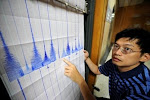
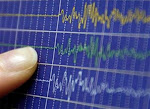
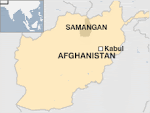







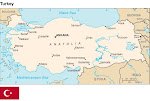
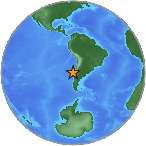




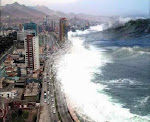
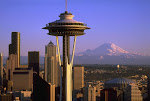
.jpg)


.bmp)




























